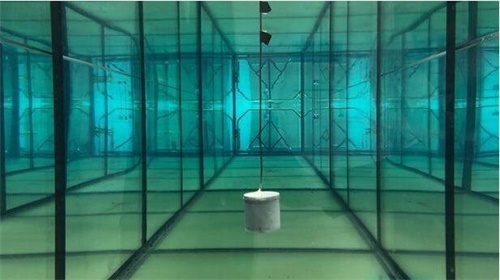Creative Autumn and Winter Warm kennels and cushions and Pet Clothing and grooming tools Cats and kennels Shenzhen Ananda Technology Co.,LTD , https://www.carmitek.com
MIT develops a battery-free underwater communication system to monitor ocean temperatures
[ Instrument Network Instrument Development ] Currently, creating interconnected sensors for monitoring and transmitting data faces a key challenge in submarine networks: how to power many sensors that remain underwater for long periods of time.
According to foreign media reports, researchers at the Massachusetts Institute of Technology recently developed a battery-free underwater communication system that uses near-zero power to transmit sensor data. Scientists envision that the system will be used to monitor ocean temperatures to study climate change and track long-term marine life.
Underwater communication system uses batteryless sensors
Communication systems use the "piezoelectric effect" to generate charge in the vibration of certain materials. The system also relies on "backscattering," a communication technique commonly used for RFID tags that The wireless signal is reflected back to the tag and returned to the reader to transfer the data.
In operation, the transmitter transmits sound waves through water to a piezoelectric sensor having stored data that vibrates and stores the generated charge as it hits the sensor. The sensor then uses the stored energy to reflect the sound waves back to the receiver. The bits in the transmitted data correspond in an alternating manner between such reflections.
“Once you have a way to send 1 and 0, you can send any message,†the researchers showed. “Basically, we can communicate with underwater sensors based on the signal of the incoming sound we are harvesting.â€
The researchers demonstrated their piezoelectric acoustic backscattering system in the MIT pool to collect water temperature and pressure measurements. The system is capable of transmitting accurate data of 3 kilobytes per second from both sensors simultaneously at a distance of 10 meters between the sensor and the receiver.
Inspired by the “Blue Planetâ€, the researchers are a series of natural documentaries exploring all aspects of marine life, covering approximately 72% of the Earth's surface. “I suddenly realized how oceans and marine animals evolve and multiply. Internet of Things (IoT) devices can help with this research. But under water you can't use Wi-Fi or Bluetooth signals... and you can't put the battery Put it on the ocean because it can cause pollution problems."
Researchers have turned their research into piezoelectric materials, which have long been used in microphones and other devices that respond to vibrations and generate small voltages. But this effect is also reversible: the application of voltage causes the material to deform, and if placed under water, the effect produces pressure waves that pass through the water. Typically, they are commonly used to detect sunken ships, fish, and other underwater objects. . "
This reversibility allows us to develop a very powerful underwater backscatter communication technology," Adib said.
Communication relies on the piezoelectric resonator to produce natural deformation in response to strain. The system includes an immersed node, a circuit board housing the piezoelectric resonator, an energy harvesting unit, and a microcontroller. Any type of sensor can be integrated into a node by programming the microcontroller. An acoustic projector (transmitter) and an underwater listening device (called a hydrophone (receiver)) can be placed outside of a certain distance.
Researchers want to prove that the system can work at longer distances and communicate with more sensors at the same time. They also want to see if the system can transmit sound and low-resolution images.